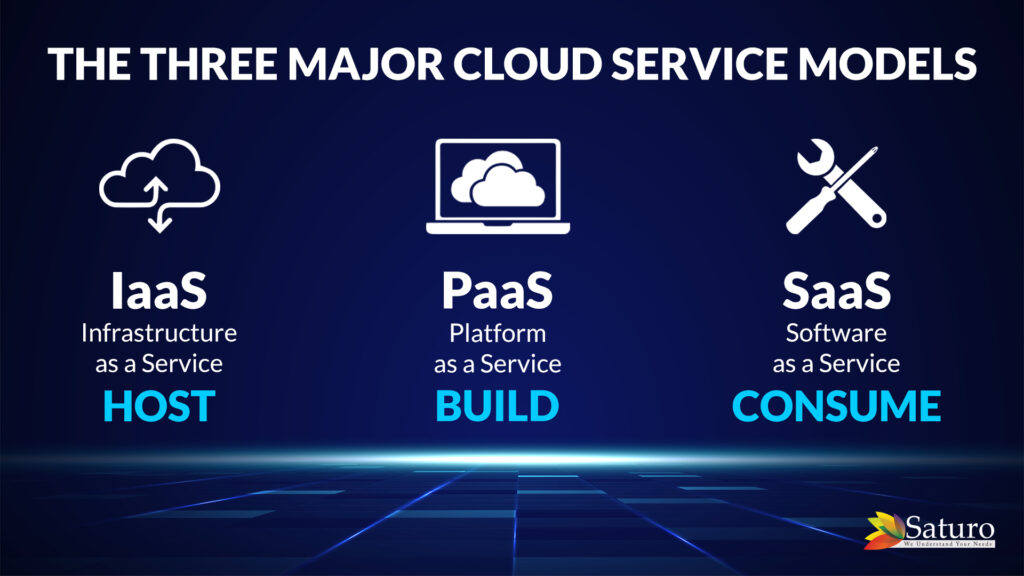The Three Major Cloud Service Models are Infrastructure as a Service (IaaS) vs. Software as a Service (SaaS). Each model has its own advantages and disadvantages. IaaS is the easiest to set up and manage, while SaaS is the most expensive and requires more maintenance. Users don’t have control over the process but can customize its features to meet their needs.
Platform as a Service (PaaS): A software development platform delivered over the Internet. The organization manages all servers, storage, networking, and other resources, while developers take care of the application. Infrastructure as a Service (IaaS): a cloud computing model that is used by companies without on-premise data centers. These services deliver virtual computing resources over the internet. The cloud service provider hosts the servers and handles the underlying operating systems.

PaaS: The most common cloud service model is PaaS. This model delivers entire resources to a customer, such as a website. The resources can be managed by a company or a platform provider. The main benefit of PaaS is that it is subscription-based and offers flexible pricing options. IaaS: IaaS offers software as a service. Both models have the same basic features, but each has different costs and benefits. It’s important to evaluate all three to make sure you’re getting the right one for your business.
SaaS: PaaS provides a software development platform over the internet, which enables developers to access up-to-date tools and frameworks. The organization manages the servers, storage, and networking, while developers manage the applications. IaaS: This model is the most common type of cloud service used by companies without on-premise data centers. It offers a virtualized environment that includes servers and hypervisors.
IaaS: IaaS and PaaS are similar but have different advantages. IaaS offers flexibility and control over the entire computing stack. While SaaS uses cloud-based software, IaaS lets users access applications from their own desktop or mobile device. They don’t have to worry about the installation and maintenance of cloud-based services. However, SaaS is more expensive and does not offer customization.
IaaS: An infrastructure as a Service model is a service that provides applications and infrastructure through the Internet. With this model, the organization manages the hardware, software, and networking infrastructure. In contrast, on-premise solutions require the user to manage the hardware and software. The three major cloud service models have different benefits and drawbacks, and they can be a great fit for any business. Once you determine the best solution for your needs, you can move to the next phase of cloud computing.
The private cloud service model, or SaaS, is the most popular of the three. It involves the use of private-cloud infrastructure, which is owned by a single company. Public clouds, on the other hand, are shared and involve the use of shared services. They are not as expensive as private-cloud solutions, but they do have limitations and aren’t right for all businesses. The hybrid cloud model offers the benefits of both private and public clouds and allows companies to choose the most appropriate one for their needs.
To Know more about Oracle NetSuite Cloud ERP, feel free to reach us on:
Website: https://www.saturotech.com
Saturo Website: https://www.saturotech.com/
BillMade Website: https://billmade.com/index.php/oracle-netsuite-pos/
Email ID: marketing@saturotech.com
Saturo Social Media Links:
- Facebook: https://www.facebook.com/saturotech/
- Instagram: https://www.instagram.com/saturotechnologies/
- LinkedIn: https://www.linkedin.com/company/saturo-technologies-private-limited/
- Twitter: https://twitter.com/saturotech
- YouTube: https://www.youtube.com/channel/UC69yIWnRwPV04KydM64sXTw/videos
BillMade Social Media Links:
- Facebook: https://www.facebook.com/Billmade-786831018169916/
- Instagram: https://www.instagram.com/billmadepos/
- LinkedIn: https://www.linkedin.com/company/billmade-pos/
- Twitter: https://twitter.com/saturotech
- YouTube: https://www.youtube.com/channel/UCdh1AYXBN3M4oBmxwGa7yeg/videos
To Read More of our NetSuite Blogs Visit: https://www.saturotech.com/blog/
To Read More of our BillMade Blogs Visit: https://billmade.com/index.php/blogs